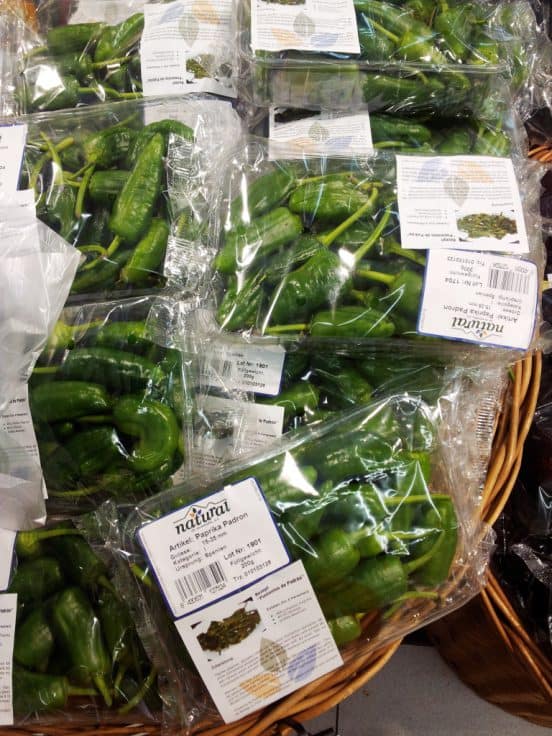The world of the pepper trade is a pretty strange one, and the most noticeable – to me anyways – case this year has been the Pimiento de Padrón.
There are enough fruit and vegetables from Spain on sale here in Austria, but they all just hail from the mar de plastico, the sea of plastic, in that country’s very South. Hardly sustainable, and certainly not much to do with the diversity of heirloom varieties in Spain – and even when it comes to officially recognized varieties of peppers, Spain has a rather nice spread of different chillies for different uses: Piquillo, Luesia Morrón, Largo de Reus, cornucabra – and of course, the Pimientos de Padrón.

Just this year, I found some of them fresh, in the green state in which they are usually used. First, in Vienna’s highbrow food temple Meinl am Graben, but now even in the more pedestrian (if big) Merkur supermarket. It’s like finding Bhut Jolokia at a Wal-Mart. (The just-mentioned Meinl am Graben actually does carry Bhut Jolokia, by the way.)

The funny, and telling, thing is that plants of the Padrón peppers were also on sale at Arche Noah. That organization’s May 1 market was, as usual, a great place for seeing the range of people nowadays drawn to heirloom varieties of food plants, and among them the greatest middling section of people with an interest in growing different kinds of peppers. (Absolutely uninterested ones and absolute fanatics tend not to be found there, but otherwise, everyone from young hip families to grandmothers looking for the tastes of their youth.)
Among the hundreds, if not thousands, of people who went past the peppers stand, there were some who bought some plants of Pimiento de Padrón. There were exactly three I know of who actually talked about them and had any kind of knowledge of what they were, and why they were special – all people who had been to Spain and had gotten to know them as the tapas as which they are traditionally used.
Given how few people knew of that, I can’t really imagine them selling well in supermarkets. Add in the peculiar trait of the Pimientos de Padrón – “uns pican, outros non” (some of them bite, others don’t) – and they are probably even less appealing to the average (supermarket food shopping) Austrian.
Too bad.
The average person’s diet could use some spicing up, and fried green Padrón peppers with sea salt would be just a thing to entice the senses, have an authentic taste, and have your veggies, too…

Leave a Reply
You must be logged in to post a comment.